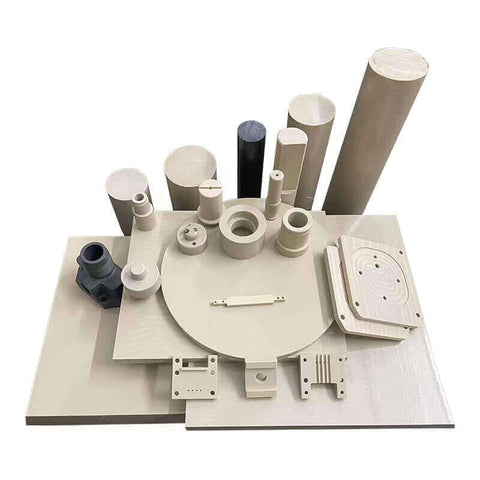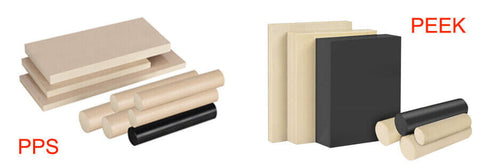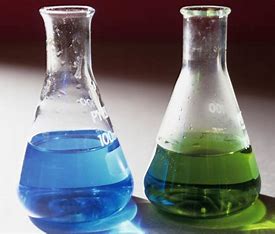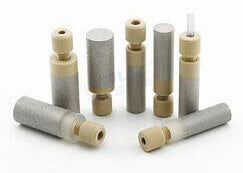Did you know that plastics also come in materials that can cope with high temperatures, chemicals, abrasion and tearing, and still retain their shape and properties? Perhaps you have heard of two plastics, PPS or PEEK. Indeed, they are both high-performance thermoplastics and while they have a lot in common, they also have some important differences.

Now take a look at this article!
In this article we will look at PPS and PEEK materials, their advantages and disadvantages, and their uses in various industries.
Similarities between PPS and PEEK
PPS and PEEK are both semi-crystalline, high-performance thermoplastics, which means they have a partially ordered molecular structure that gives them high strength and stiffness. So there are common properties and advantages, such as:

Good chemical compatibility: they are resistant to most acids, bases, solvents and fuels without degradation or corrosion.
Low friction: They have a smooth surface which reduces friction and noise when in contact with other materials.
Good resistance to fatigue cracking and abrasion: they can withstand repeated stress and abrasion without cracking or losing their shape.
Flame retardant: they are self-extinguishing when exposed to fire or heat without releasing toxic gases or fumes.
Dimensionally stable: Their low coefficient of thermal expansion means they do not expand or contract much when heated or cooled.
Low moisture absorption: they do not absorb water or humidity from the environment, which prevents expansion or distortion.
Good insulating properties: they have a high electrical resistance and a low dielectric constant, which makes them suitable for electrical insulation.
Due to these properties, PPS and PEEK are used in many different industries and applications, such as:
Oil and gas: They can withstand high temperatures, pressures and corrosive fluids in valves, seals, pumps, pipes and connectors.
Food and dairy: They can comply with FDA regulations and resist bacterial growth in food processing equipment, packaging and utensils.
Medical implants: They can be biocompatible and sterilisable in artificial joints, dental implants, surgical instruments and catheters.
What Makes PPS and PEEK Different
Knowing what they have in common, since they are not the same name, it means that there must be different differences, and these differences mean that they are used for different purposes. Here are some of the main differences between PPS and PEEK:

Temperature limit of use: PEEK has a higher maximum continuous working temperature than PPS (480°F versus 430°F), which means it can handle higher thermal environments without losing its properties or melting.
PV limit: PV is a measure of the pressure and speed a material can withstand in a bearing application. pEEK has a higher PV than PPS, which means it can handle higher loads and speeds without wearing out or generating excessive heat.
Tensile Strength: Tensile strength is a measure of how much force a material can withstand when stretched before it breaks.PEEK has a slightly higher tensile strength than PPS (14 ksi vs. 12 ksi), which means it can resist more tension without breaking or deforming.
Compressive Strength: Compressive strength is a measure of how much force a material can withstand before it breaks when compressed; PPS has a better compressive strength than PEEK (18 ksi vs 16 ksi), which means it can resist more compression without breaking or deforming.
Impact Strength: Impact strength is a measure of how much energy a material can absorb before it breaks when impacted by an object.PEEK has a higher Izod notched impact strength than PPS (1.5 to 2.2 ft-lb/in vs. 0.38 to 1.5 ft-lb/in), which means it can withstand more impact without cracking or shattering.
Chemical resistance: Although both PPS and PEEK have good chemical resistance, PPS has better chemical resistance than PEEK, with no known solvents below 400°F. This means it can resist more aggressive chemicals without dissolving or swelling.
Depending on the application, one material may be preferred over the other. For example

High temperature environments: PEEK is more suitable than PPS for applications involving high temperatures, such as aerospace, automotive and electronics.
High PV bearing applications: PEEK is more suitable than PPS for applications involving high pressures and speeds, such as pumps, compressors and turbines.
Coloured products: PPS is more suitable than PEEK for applications where colour is required, such as toys, cosmetics and household items. PPS is easier to add pigments to than PEEK, which is often available in dark colours.
How do we choose them?
In summarising the above, we have learned about the similarities and differences between the two materials, PPS and PEEK. If you are looking for a high performance thermoplastic material for your project or product, then feel free to harass us if you still have questions after reading this article. beeplastic could be one of your best options if you are looking for a high quality supplier of bespoke plastics. We would love to be bothered by you and help you with your needs. Do you need a free quote or any questions or help with your materials.

Our website: www.beeplastic.com
Click to contact: PPS and PEEK

